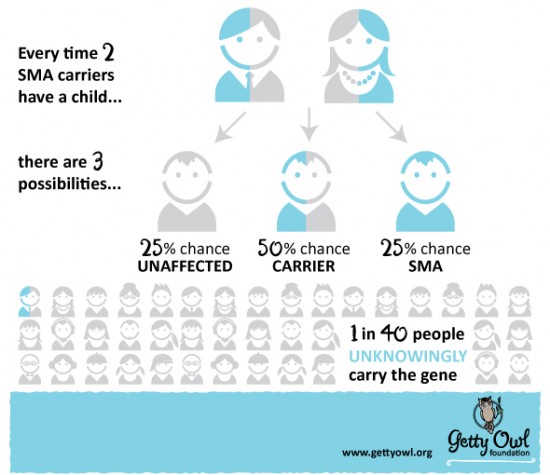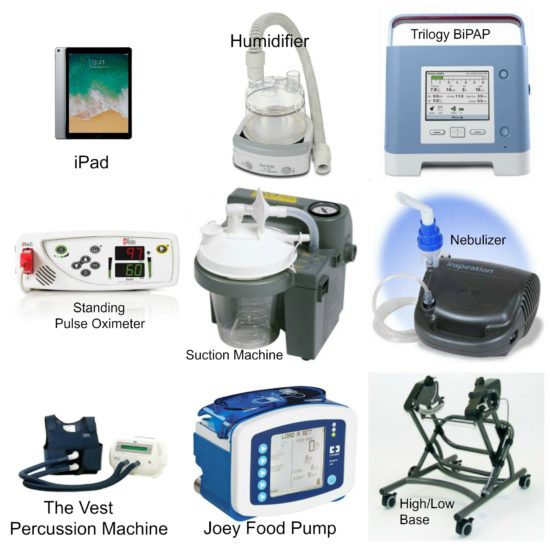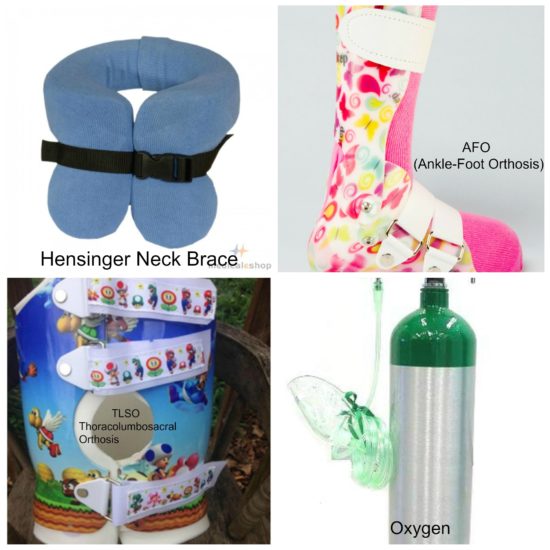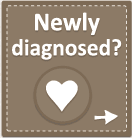


The Bunker
From Kate: Getty has been diagnosed with SMA for the past eight years of her life. At the age of four months, her pediatrician noticed that she wasn’t bearing weight on her legs and we were sent to a neurologist that very same day. Within a few minutes of being in the appointment we were told that Getty had an incurable, degenerative, and complicated disease called Spinal Muscular Atrophy. We were instructed to just “Take her home and love her.” After that point the game of life changed. It changed in ways I couldn’t see coming: the addition of devices, supplies, medical professionals, etc. I didn’t know exactly who how to care for Getty, so the steep learning curve was intense and very consuming. I remember often just not eating or sleeping for many nights very early on, worried that if I left her side something dire would happen. After a while, I realized that someone needed to stuff food into my mouth, literally, so I would have some kind of substance while cramming for this incredible test of strength and courage. Caring for Getty has been a roller coaster in all kinds of ways: setbacks, celebrations, triumphs, euphoric, confusion, anger, grace, and incredible amounts of unconditional love and support. I can’t speak for all SMA families, but something interesting happens after some time. You lose track of time, you lose track of awareness, you lose track of friends, you lose track of you life before SMA, you lose track of self, and you lose track of the world. For me, all of this loss kind of ran together. The intensity of caring can create a sense of isolationism. At some point your vocabulary and identity centers around your child. An SMA mom explained it like this one day, about four years ago. “It’s like being in a bunker for years. You have the necessities to live and care for your child, but the rest of the world keeps moving. Every once in a while you are able to leave the bunker and life as you knew it, changed. You forget how to socialize. For example, you get to a grocery store and forget everything you were supposed to buy because your body, brain, etc. is still trying to figure out how on earth you got to the store in the first place. Why is it so loud in here, and why is everyone in such a rush? Why are parents being unkind to their children? Wow, that kid just put a whole banana in his mouth, I should just wait here and make sure he doesn’t choke, because I am actually a trained professional now. 🙂 ” I remember the moment she was finished with her story. I was laughing so hard, tears were running down face. If you read with a certain perspective, maybe the summary would be, you left home to go to the store and you felt a little out of place. But I would argue there is so much more to the story that most people might not understand. The truth is in the details. It’s the blanket of fog that envelopes you as you leave your child and go out into the real world. It’s the panic that you endure the second you leave your child’s side. There is a blankness that happens in your brain when you are asked to remember something other than the needs of your child. It’s almost like there is absolutely no space in your brain for grocery lists, basic errand needs, directions, and conversation. I call it the “brain dump.” Anything other than aspects of Getty and Getty’s care immediately dump out of my head. In many ways I took solace in her story. I could relate instantly and it offered me a comfort in knowing that I was clearly not the only SMA mom feeling this really weird sense of isolation. I remember fondly being in social situations and not understanding how to carry a simple conversation. I just wanted to get to the heart of what we were talking about and move on. 🙂 I wasn’t patient, because my rationale was basically, “I don’t have time to do small talk. How do people even have time in the day to do this? Just get to the point and let’s move on.” A bit awkward. 🙂 Something else kind of happens that I didn’t foresee either, and that is relating to others. It is very hard to relate to non-SMA moms. There is no judgement involved, it’s just so different. The level of their child’s independence, experiences, aspirations, parent aspirations, extra ciricular activities, relationships, etc. It literally is all different. If I responded with the same topics I would say that Getty has little to no independence. She relies almost completely on every aspect of care. Her experiences are often surrounded by medical professionals and tests. I don’t truly know what her aspirations are, but hopefully with more time, using her eye gaze device, we might be able to have a conversation about that topic. I don’t have parental aspirations (insert opinion), because I don’t think it is our responsibility to create, coerce, and/or support our dreams for our kids. Extra curricular actives are almost impossible. Most, if not all are not accessible. We also have to be super careful about germs and exposure. We remain isolated for a good part of the fall and winter months. Relationships are also difficult. Not in the way one might think. Getty has always been welcome in any social setting, however sometimes having strong relationships can be tricky because she is unable commit to a consistent routine with kids her own age. The VGo she uses for school is an awesome way to bridge the social and educational gap, but kids like routine and consistency and sometimes the screen of a robot can have its challenges to make friends and keep friends. Pretty different. And if you are reading this with sadness or indifference, please don’t. While many of these examples could leave a reader feeling like our lives might not be as fulfilled, I want to reroute your thinking now. The happiness of our kids are the priority and with this, a sense of fortitude. We figure things out and make it happen. I am always inspired by other SMA families that take a situation and rethink the possibilities. They start their own Girls Scout troop. They find amazing ways to solidify independence for their kids. They create gadgets, develop software, they build physical therapy frames to make sure their kid’s are engaged and independent. They advocate for their child in IEP’s. They fight for extended PT and OT time. They figure out the complicated map of social services that give their kid’s more options in care and activities. They take a simple toy and adapt it for their child’s needs. And here is the best part, they share it with all of us. This community is determined to give their child and children with SMA the tools for independence, experiences, extra curricular actives, and a way to build relationships. So while I respond in a certain way in the above paragraph, there is more to the story. If a non-SMA parent would like to sit down and talk about Getty’s life and how it is enriched, let’s have some coffee. Although, I will let you know now, I have become a bit awkward. I don’t speak in complete sentences now. I stare at my phone to make sure there are no emergencies at home. I might drink the coffee super fast because I need more to refuel when I get home. I also might drink it fast because I worry I will need to jump into gear if there is an emergency and I don’t want to waste that precious cup of joe. I also might accidentally cut you off in mid sentence, because I just realized that I missed an important piece of my story earlier and I think you should hear it. 🙂 Awkward, I know. There is more to this practical story of caring for someone with SMA. I have much, much more. While this month focuses on facts and statistics about SMA, it is also a glimpse into the practical world that has been created since diagnosis. We change with time, but I think SMA parents, in particular evolve into something incredibly different than if their child was not diagnosed. I don’t have a crystal ball, but sometimes moments will happen and I think, would I have reacted with the same motivation or determination if I was still teaching AP US History or Government? Like would life be a daily struggle to keep my head above water? My guess is no. My once ambitious self might not be constantly worried about my child’s oxygen levels or HR. I wouldn’t be worried about the exact calories they are consuming. I wouldn’t be apprehensive during doctor visits of any kind. I am not sure where my worry would be placed. I’ll never know. But I know that I am thankful for a group of families that do get it. We are spread around the world and while that is a comfort, it sure would be nice to be a able to walk across the street and have a cup of coffee with a SMA mom that just gets it. Man that would be nice and so healing. So if you ever pass by a mom randomly walking the isles of a grocery store who might look as though she is in a fog, just say hi and throw her a smile. Whether she knows it or not, just getting out was the best thing she could have done for herself that day. Even with the fog, even with the panic, even with the brain dump, she is getting some unknown rest before she goes back into the bunker.
Aug
2018
The Nuts and Bolts of Spinal Muscular Atrophy
From Kate: Since it is SMA Awareness Month, let’s talk facts about Spinal Muscular Atrophy. I know for us, we had never heard of it until Getty was diagnosed and perhaps someone reading will be motivated to share these facts with others and perhaps awareness can continue to spread. Interesting enough, since Getty’s diagnosis, we have learned of many families on a similar journey through friend of friends. Which tells us that this disease affects all people, all age groups, all genders, and all really everything that links us as human beings. It is so important to talk about and discuss aspects of SMA. I hate to think that this genetic disease continues to hide in the shadows until an unsuspecting family is given a similar diagnosis and prognosis. -Here are some facts about SMA: -Spinal Muscular Atrophy is a genetic disease that causes progressive muscle degeneration and weakness. Individuals with SMA develop feeding and breathing problems as the weakness gets worse over time. -SMA is caused by a mutation in the survival motor neuron gene 1 (SMN1). In healthy individuals, this gene produces a protein that is critical to the function of the nerves that control our muscles. Without them, nerve cells cannot properly function and eventually die, leading to debilitating and often fatal muscle weakness. -SMA is still the #1 genetic killer of young children. -SMA affects approximately 1 in 11,000 babies. -1 in every 5o Americans is a genetic carrier of SMA. *To put this into perspective, I have two examples to think about. Our house loves Adele and I was lucky enough to see her show in Oakland, CA. Sometimes I can be a wet blanket when I am among lots of people because my mind goes straight to statistics. “You know there are at least 390 SMA carriers here, I wonder if they are aware?” Taking it to another level you think about compete totals of Adele’s American Tour, she sold over 750,000 tickets. So it is possible that over 15,000 people who went to her performance in America was a carrier of SMA. That is more people than the population of Healdsburg, CA; more than St. Augustine, FL; and more than Sedona, AZ.  * I want to apologize for the inaccurate 1 in 40 statistic. Oddly enough, August actually snuck up on us as well and I failed to make an updated image. My apologies, but I hope is that it helps offer some information. What is important to understand is what chances look like for two SMA carriers. When two SMA carriers have a child, there will ALWAYS be a 25% chance of having a child affected by SMA. The statistic that I always get overwhelmed by is the fact that 50% of children born to two SMA carrying parents, can become SMA carriers themselves. In an of itself, that is just math. What makes that overwhelming is that there are so many people out there who may not know they are SMA carriers. This silent genetic disease continues to propagate into our population and unfortunately leading to another unsuspecting family that will at some point, get the heart breaking news that their child has SMA. -SMA is a pan-ethnic disease and does not discriminate based on race, ethnicity, or gender. -There are 4 Types of SMA: I, II, III, IV, which is based on age and highest milestone achieved. For more detail about Types, go HERE. -These are just a few of the real facts and statistics about SMA. For the second year in a row, we are able to rejoice in the new fact that there IS A TREATMENT!!!!!!!!! -Spinraza was approved by the FDA on December 23, 2016 and it has become a game changer for many people affected by SMA. To learn more about Spinraza go HERE.
* I want to apologize for the inaccurate 1 in 40 statistic. Oddly enough, August actually snuck up on us as well and I failed to make an updated image. My apologies, but I hope is that it helps offer some information. What is important to understand is what chances look like for two SMA carriers. When two SMA carriers have a child, there will ALWAYS be a 25% chance of having a child affected by SMA. The statistic that I always get overwhelmed by is the fact that 50% of children born to two SMA carrying parents, can become SMA carriers themselves. In an of itself, that is just math. What makes that overwhelming is that there are so many people out there who may not know they are SMA carriers. This silent genetic disease continues to propagate into our population and unfortunately leading to another unsuspecting family that will at some point, get the heart breaking news that their child has SMA. -SMA is a pan-ethnic disease and does not discriminate based on race, ethnicity, or gender. -There are 4 Types of SMA: I, II, III, IV, which is based on age and highest milestone achieved. For more detail about Types, go HERE. -These are just a few of the real facts and statistics about SMA. For the second year in a row, we are able to rejoice in the new fact that there IS A TREATMENT!!!!!!!!! -Spinraza was approved by the FDA on December 23, 2016 and it has become a game changer for many people affected by SMA. To learn more about Spinraza go HERE.
Aug
2018
Comment
The Not So Quiet, Unsung Heroes
From Kate: Let’s start with this. 🙂 Take a quick gander at all of the pictures below. Know that for all SMA families, they pretty much have most, if not all items. 🙂 Some are life saving devices, some help ensure safety while transporting, some ensure positional stability, some all for effective ways to communicate, etc. I titled this post “The Not So Quiet, Unsung Heroes” for a reason. For many of these items, they ensure safety and health for our kids, but man do they have annoying alarms. 🙂 “Beeps”, “Ping”, “Buzz”, and “Beep, Boop, Bong”. Many of these devices, they are used every minute of every day to several times a day, in many repetitions. Many of these devices have literally saved and hopefully will continue to save Getty’s life. Many of these devices have to have back-ups. If for instance, Cough Assist, Trilogy BiPAP, Suction, Joey Food Pump, or Humidifier fail (and they do), a frantic call to the medical equipment company for a “switch out”. In my opinion they take their “sweet time”. In the meantime, one must pull out the back-up devices in an instant. OOP Out of Pocket is an immediate slap in the face. Often times, OOP expenses are do to insurance companies denying a claim due to “Not Medically Necessary”. The cost adds up and your savings account decreases. In the SMA Community, I learned one amazing skill from other fellow families, I call it “The Hustle”. The definition of a hustle is as follows: “to obtain by forceful action or persuasion.” Oh man, I am getting really good at this. Not always successful, but continue to push. LOL! Below there are many items that range in cost, but are vital to our child’s health, well-being, education, socialization, and transportation. The Hustle comes in many forms, but the essence of it means that you don’t stop at the word, “no”. While I whole heartening agree that there is something very sickening for any primary insurance to suggest that, for instance, a pulse oximeter is not covered by insurance because it is not considered “medically necessary”. I think it is equally sickening that a family would have to compromise their family income to buy a life saving device. For educational purposes, the Pulse Oximeter’s responsibility is to monitor Getty’s O2 and HR every single second of every single day. Getty is never without monitoring. O2 levels tell us that she may be getting sick, has some secretions in her throat that may be compromising her, constipation, etc. HR tells us many of the same things, because often O2 and HR work in tandem to let parents know “something may be brewing”. Many times, our pulse oximeter has alerted us that Getty’s health was in immediate danger. In a moment such as this, we then rely on the Suction Machine and Cough Assist to get her “numbers” back up. I hope you can now see how vital this device is for our ability to monitor her. Without a device like this, we would have to rely solely on her sounds and color to let us know how she is doing. Can you imagine? I literally would be staring at my daughter’s face with a suction catheter in hand 24 hours a day/ 7 days a week. She is already so over my constant monitoring, she would be so annoyed. 🙂 So we pay OOP for this device. This device is not cheap. So where does “the Hustle” come in? Good question. The Hustle has been for everything else. 🙂 So here’s how it goes. Primary insurance denies a device or piece of equipment and the moment you receive denial in the mail you appeal. Always appeal! Many times an appeal needs to be accompanied by a LMN (Letter of Medical Necessity). This letter becomes the argument for insurance to perhaps consider the item to be medically necessary. Facts, documentation from doctors, journal discovery, data, etc. Sometimes it works and sometimes it doesn’t. Let’s say it doesn’t, keep hustling. State, county, city, and non-profit resources may then be able to help. Denial, Appeal, LMN, are all vital for these resources to “kick in”. Fingers crossed a resource will and can help. For us, we have hustled for: Stander Suction Machine Tobii Eyegaze Cough Assist Bingo Hoggi Stroller Permobil C300 Bathchair Trilogy BiPAP Joey Food Pump *ALL Vital to Getty’s health, well-being, education, socialization, and transportation. SMA families keep hustling. Just keep hustling. If you have any questions about any of the items below, please ask, I would be more than happy to explain. You know the irony of the pictures below is that we literally don’t see these items in the house. LOL! They have all kind of blended into our environment, and we forget they are even there. Until they alarm, “BING”, “PEEP”, “BONG”, “BEEP, BOOP, BONG!” 



Aug
2018
Comment
August is SMA Awareness Month
From Kate: August is national SMA Awareness Month. The designation of a month, gives a community like ours a chance to focus on where we are and where we are going. First of all, I am just so thankful there is a month reserved for Spinal Muscular Atrophy. It seems to me when a cause is allocated a national month, it kind of offers more legitimacy? It is a chance to have a collective voice for a certain time span. For the entire month of August, people around the US can share all kinds of facts and personal experiences. There is a sense of peace knowing that collectively there are hundreds, if not thousands of people offering to share all aspects of SMA as well. So it really feels cool to know that for at least for 31 days, there is a collective focus and voice. The facts about SMA are always important aspects of SMA Awareness Month, as they should, but this month I would also like to highlight some other aspects of SMA that perhaps the rest of the planet might not be in tune to or have experienced. This month I would like to highlight the practical aspects for caring for a child with SMA. I will start by mentioning that it is complicated. 🙂 Perhaps the biggest issue I have in regards to explaining what our life is like can almost sound contradictory. “In a nutshell, Getty was diagnosed with SMA, type 1 at the age of 4 months. Most, if not all of her external muscles are not functioning as an average child and so she depends on others for all aspects of her physical life. She is fed exclusively by gastric-tube, she depends on several machines that support her ability to breathe, and she is unable to swallow on her own and so a suction machine is needed every few minutes to make sure her airway is clear. Getty must lay flat due to her compromised lung capacity. We monitor her saturations 24 hours a day, 7 days a week. Getty is considered non-verbal.” What I would suggest is that after explaining what “is” happening to Getty, isn’t who Getty is. Nothing about the above description offers any explanation of who Getty is. The above are the logistics to solidifying Getty an incredible life. The machines she depends upon does not define or hamper her spirit or zest for life or ours as family. Average or normal was thrown out a very long time ago and this is and will always be our normal. We don’t dwell, we don’t want pity, we would just like to live among the world and its people in our way and to be celebrate for her life in the now, not in the later. This month will be focused on what our lives are as a community and how the rest of the world can take note and adapt to our way of living, not the other way around. Because this is our normal and while it can be very difficult, we love in our own way. 🙂 I hope you enjoy this month’s blog posts. I hope readers will take away with is a better understanding of what life looks like in our area of wonderful. I hope from the stories you read, those not living in the world of SMA, can gain a much better understanding, appreciation, and in turn, a new or renewed motivation to advocate for all individuals with all abilities. My hope is to offer a safe place for people to ask questions and to gain a better understanding of a world that you may or may not know much about. I’d like to introduce you to our sweet and sassy 8 year old, Getty Storm. 
Aug
2018
Comment
The Delivery
From Kate, It has been very difficult to get a chance to sit down long enough to write. I am finding it more and more difficult to collect my thoughts and then to type it out for those reading to understand how we are doing, what Getty is up to, and how life has manifested for the last few years. I think in certain ways too much has happened and so I get overwhelmed with how to cut it up in small posts allow a reader to keep up with life over here. I consume too many cups off coffee in a day, however currently I am on my first cup which is kind of a blessing. My brain is still slowly coming into speed, so I am going to take advantage of the slower processing effects. Yesterday (July 30th) is the day our DNA was altered eight years ago. It is the day in which all plans, dreams, and hopes, were thrown out the window. It is the day that life became really cruel. New parents given news that there was nothing they could do for their child and if they were lucky, they had about a year, maybe two, so go and make as many memories as possible. Clearly this wasn’t in the plans. If I just focused on the cruel part for a moment, I would offer the cruelty is in a few aspects. For sure the cruelness comes from the notion that there is even a disease/disorder like Spinal Muscular Atrophy. I mean come on, you have a perfect pregnancy, perfect birth, baby shows literally no sign of worry and then you give a brand new family this news. Yeah man, that is cruel. But aside from the science, I think what is and was most cruel was the offering of the diagnosis itself. While I am not in this doctor’s shoes, I would suggest that the prognosis and execution of the diagnosis could have been less dire. I go back and forth every once in awhile to ask myself, “what would you have wanted to hear from the doctor in order to be content with the delivery of the diagnosis?” I think for me it would have been so “helpful” to hear our Getty’s doctor say this, “Getty has Spinal Muscular Atrophy. I am really sorry to be the one to tell you this. What I want you to know is that while this disorder/disease can have a variable life span, there are things we can all do to give Getty a good fulfilled life. I know you all have a lot to think about and I want you to know that while you are making plans and figuring out what kind of decisions you would like to make, we are here help you with whatever questions you may have. We have a team of doctors here that care for other SMA patients and while this could be considered a rare diagnosis, we will certainly do our best to work with you. Getty is our main concern.” A little too emotional huh? Yep, I wonder if I am asking too much. I am not in the medical field, so I wonder if a doctor is limited in the way a diagnosis is offered. Okay maybe this would be a better option. “Getty has Spinal Muscular Atrophy, (insert some facts), I know this is a lot to take in right now but….. You know what I am realizing that there isn’t a right way to have heard it. How do you merge emotion and direct medical information in a way that doesn’t sound robotic or too compassionate? What a hard thing to balance. I don’t envy any doctor that has to offer any kind bad news to a family. However, I would suggest that in the very least this doctor could have offered some kind of hope. Some sliver of light that could offer us some kind of hope. The manner in which it was offered, the diagnosis literally was read verbatim from a medical textbook. Maybe that is what I will probably always have issues with. It was sterile, it was finite, it was without options. Every single family I have met on this journey has had a similar scenario. They share a similar indifference and frustration. With the emergence of a treatment for SMA I am truly hoping the conversation between doctor and family changes. I hope with the introduction of Spinraza, a new and progressive conversation can happen and a family is offered medical hope instead of being forced to create their own internal hope. Because as long as SMA is not cured, more families will be sitting in a neurology office hearing the words, Spinal Muscular Atrophy for the first time. The shock and utter disorientation of this diagnosis can often be too much to handle. What an opportunity a doctor has now to offer the option of a treatment and a sliver of hope. To all the SMA parents and adults out there we send you love and hope that today is filled with love and endless amounts of hope.Jul
2018










